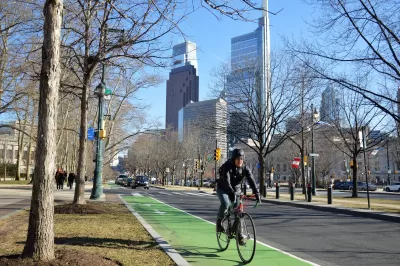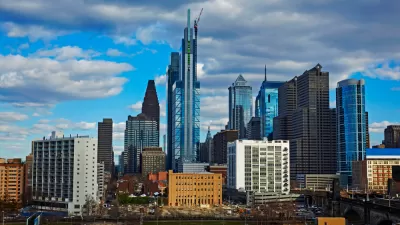A new report provides advice and guidance on how cities, with Philadelphia as its example, can make the most of the historic funding opportunities made available by the American Rescue Plan approved by Congress earlier this year.

Nowak Metro Finance Lab at Drexel University and Accelerator for America recently published on analysis of the American Rescue Plan (ARPA) and its impact on the city of Philadelphia.
The new report, "Localizing and Sequencing the American Rescue Plan Act: Estimating the Impact in Philadelphia," elucidates the complexities of the bill while also charting out the work to come.
"ARPA requires communities across the country to organize, plan, and manage an influx of funds at a scale not seen in this century," according to an article by Bruce Katz, Karyn Bruggeman, and Colin Higgins that shares new of the report.
Metro areas will be securing and deploying funds made available through ARPA for years to come. Cities and states have spent months deliberating, often inconclusively, how to efficiently and equitably allocate their share of the $350 billion in State and Local Fiscal Recovery Funds. They’re simultaneously working to secure new ARPA-funded competitive grants that are just now becoming available.
The city of Philadelphia has the potential of securing $9.2 billion in funding from ARPA, according to the report—a figure far larger than has previously been reported. The report includes a full accounting of the 64 programs that could deliver funding to the city. Given the huge opportunity, and the potential for missing out on many of those opportunities, the report suggests that strategic organizing will be necessary in Philadelphia and in all cities.
In tracking the flow of ARPA funds — and future federal spending — local leaders must consider which entities are receiving funds. If programs require applications, who must apply, and by when? How do ARPA and infrastructure funds fit into key short- and long-term policy goals? How can collaboration be fostered across silos when dozens of entities are likely to receive funds? And lastly, how can your community leverage private and philanthropic investments to multiply the impact of federal funds in distressed communities?
The article also details the phased rollout of ARPA funding, noting that the second, forthcoming phase will be the most critical for "securing ARPA's maximum impact." The Nowak Lab previously outlined the sequencing of ARPA funds in a Timing & Sequencing memo.
FULL STORY: The American Rescue Plan’s Impact on Philadelphia & Lessons for Infrastructure

Planetizen Federal Action Tracker
A weekly monitor of how Trump’s orders and actions are impacting planners and planning in America.

Map: Where Senate Republicans Want to Sell Your Public Lands
For public land advocates, the Senate Republicans’ proposal to sell millions of acres of public land in the West is “the biggest fight of their careers.”

Restaurant Patios Were a Pandemic Win — Why Were They so Hard to Keep?
Social distancing requirements and changes in travel patterns prompted cities to pilot new uses for street and sidewalk space. Then it got complicated.

Albuquerque Route 66 Motels Become Affordable Housing
A $4 million city fund is incentivizing developers to breathe new life into derelict midcentury motels.

DC Area County Eliminates Bus Fares
Montgomery County joins a growing trend of making transit free.

Platform Pilsner: Vancouver Transit Agency Releases... a Beer?
TransLink will receive a portion of every sale of the four-pack.
Urban Design for Planners 1: Software Tools
This six-course series explores essential urban design concepts using open source software and equips planners with the tools they need to participate fully in the urban design process.
Planning for Universal Design
Learn the tools for implementing Universal Design in planning regulations.
Heyer Gruel & Associates PA
JM Goldson LLC
Custer County Colorado
City of Camden Redevelopment Agency
City of Astoria
Transportation Research & Education Center (TREC) at Portland State University
Camden Redevelopment Agency
City of Claremont
Municipality of Princeton (NJ)





























